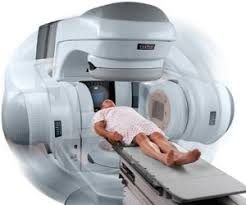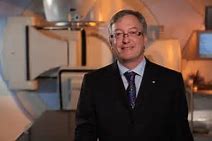Study Highlights Life-Saving Importance of Radiation Therapy Access


A new study has shown that hundreds of lives in NSW may be saved each year if more people were given access to radiation therapy treatment.
The study estimated that out of about 20,000 new cases of cancer reported in NSW in 2006, more than 400 patients died as a direct result of not having radiation therapy when clinical trial evidence suggested they would have benefited from this effective treatment.
The study revealed the types of cancers which ‘should be targeted as a further health priority so that steps can be taken to prevent premature mortality (death) due to radiation therapy underutilisation (under usage)’. These cancers include head and neck, lymphoma, prostate and lung cancers.
Study co-author Professor Michael Barton OAM, based at the Ingham Institute for Applied Medical Research at Liverpool in Sydney’s south-west, said the study underlined the importance of promoting awareness and use of radiation therapy through initiatives such as Targeting Cancer.
“This study adds to the strong evidence showing that radiation therapy saves lives of those diagnosed with cancer,” Prof Barton said. “For me, this study shows that we have a lot of wonderful equipment but we need better education, awareness and a better way of referring patients to ensure those needing to see a radiation oncologist do so.
“It also shows ongoing efforts are needed to help promote this message.”
The study, entitled Radiotherapy Underutilisation Measured by Survival Shortfall, Years of Potential Life Lost and Disability-Adjusted Years Lost in New South Wales, aimed to estimate the overall survival shortfall, ‘Years of Potential Life Lost’ (YPLL) and ‘Disability-Adjusted Life Years Lost’ (DALY) as hard measures of the effect of radiation under usage (utilisation).
Using 2006 data and analysing the 20,741 new cases of cancer diagnosed in NSW that year, the authors compared optimal (ideal) versus actual use of radiation therapy for 26 types of cancer.
They developed an evidence-based model to discover optimal radiation therapy numbers for each of the cancers as part of their initial curative treatment program.
A shortfall in radiation therapy utilisation was seen in 22 out of the 26 tumour sites, and when compared to the ideal this was found to result in a ‘survival shortfall’ of 411 people.
“(The study demonstrates that certain) tumour sites should be further targeted as a public priority so that steps can be taken to prevent premature mortality due to radiotherapy underutilisation,” the study’s authors note.
Among the tumour sites with the highest rates of survival shortfall were lung, lymphoma, prostate and head and neck.

Professor Michael Barton co-authored the new study which shows how radiation therapy could help save more lives if access was improved.
“Head and neck cancer and lung cancers are cancers where there could be the biggest overall improvement (and) significant survival benefits if radiation therapy is utilised more,” Prof Barton said.
“We also need better data than is currently available as one of the shortfalls in Australia is the lack of access to (more recent data).
“If your cancer returns (after the initial attempt to cure it), there is a chance you will die. Radiation therapy can cure cancer and stop it coming back. We need to get that message out.”
To view the study in full, click here. Study
For more information on how radiation therapy helps cure cancer, click here to return to the Targeting Cancer website.



